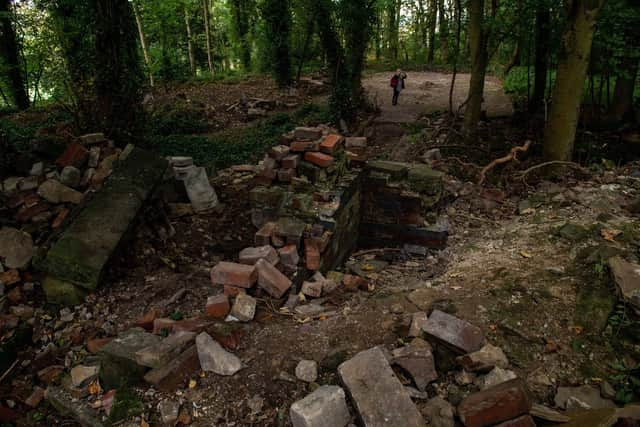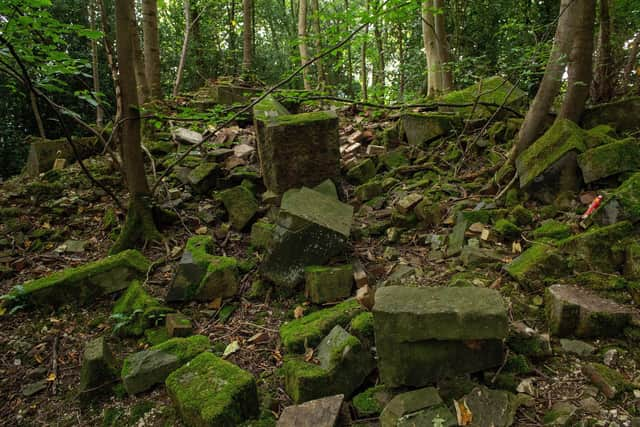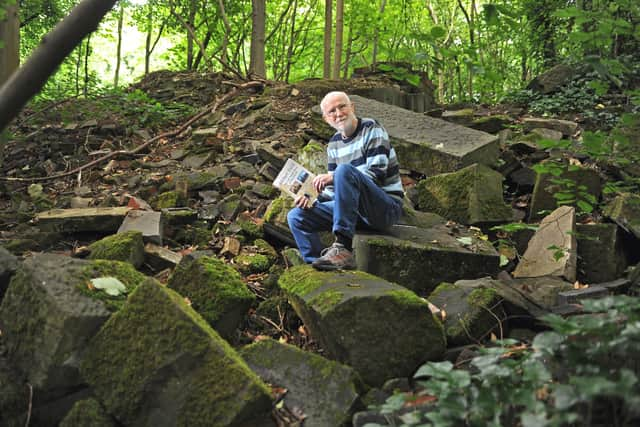Archaeologists raise fears that ruins of lost Yorkshire mansion Milner Field near Saltaire have been removed without permission
Milner Field in Shipley Glen was built by mill baron Salt’s son, also called Titus, in the 1870s – but it became known as a ‘cursed’ house as he died in the billiard room. There were also premature deaths and tragedies among the families who subsequently lived there, and by the 1950s it had fallen into dereliction and the woodland site was eventually cleared.
A group of volunteers have recently begun clearing vegetation to expose remains including foundations, archways, steps and window frames where various features of the house and grounds, which had a croquet lawn, stables, boating lake and glasshouses full of exotic fruit, would have stood.
Advertisement
Hide AdAdvertisement
Hide AdYet Saltaire History Club has now released a statement expressing concern for their actions amid fears that items such as masonry and glass have been removed from the site.


A statement released by the club read: “The Saltaire History Club is concerned about unauthorised digging at Milner Field mansion. The Club’s constitution requires it “to support the integrity of the World Heritage Site” and that surely includes the buffer zone in which Milner Field sits. Milner Field is surely a key part of the Saltaire legacy.
“Whilst the Club is very interested in learning more about Milner Field and would support organised, professional archaeological investigations of the
site, random ‘digging’ means important evidence is likely to be unrecorded, removed, damaged or destroyed, and this may compromise a full examination of the site in the future. Moreover, digging on the site is an act of trespass and removing materials without authorisation is theft. For these and other reasons, we ask folk not to engage in this activity.
Advertisement
Hide AdAdvertisement
Hide Ad“We have already taken advice from local professional archaeologists. They share our concern and are discussing the situation with officers at Bradford Council. The Club would be delighted to see archaeological investigation of the site - and if that were to come about, we hope those currently digging would


join the project. Given the above, the Club has decided not to allow further Facebook posts reporting on or encouraging unauthorised digging and will continue to work with professional archaeologists and the council to protect Milner Field’s heritage.”
The club’s members also discussed their concerns with Bradford University archaeologists, who reported them to the council.
However, the site has limited protected status in law; it is only part of the ‘buffer zone’ surrounding the UNESCO World Heritage Site of Saltaire and is not listed as a Scheduled Monument by Historic England.
Advertisement
Hide AdAdvertisement
Hide AdSaltaire History Club secretary Les Brook said: “It is important because it is intimately linked to the Salt family. In the early days after demolition in the 1950s, I suspect many people may have taken garden ornaments from the ruins, but back then there were fewer concerns about preserving heritage. Quite a lot of bits have disappeared over time, but attitudes have now changed.”


The area is privately owned by a property consortium who have never succeeded in developing the land.
Bradford Council said: “The History Club has contacted us asking if we can take action, but because the site is privately owned, it would be up to the landowner to do this.
“A formal application to add two footpaths to the legal record of public rights of way is currently being investigated by the council; this does not include access to the ruins of the house.”
